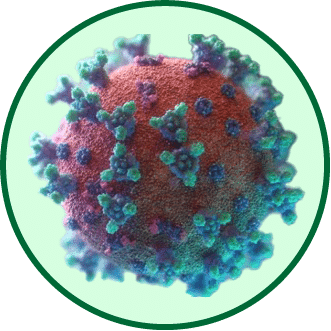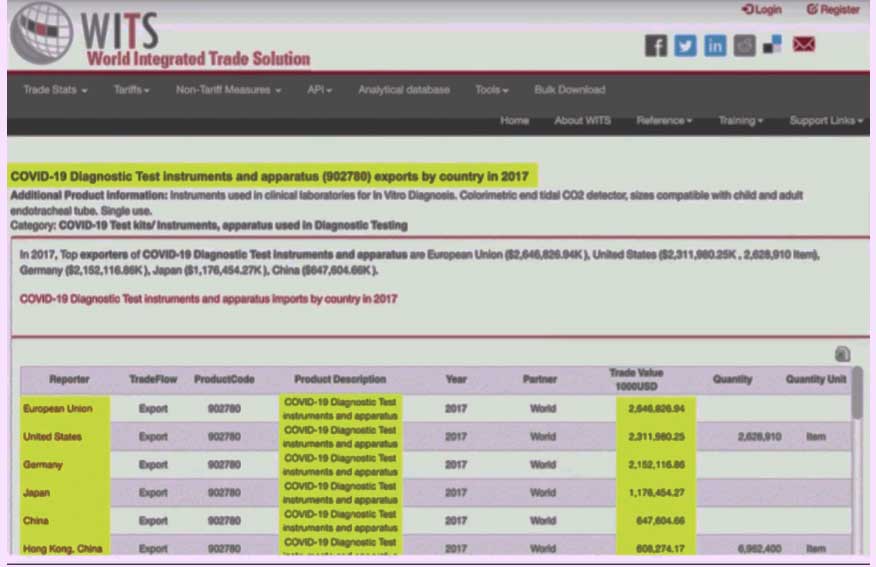Lesson 8 - Rebuilding Energy Levels
Recovering from COVID-19 is a process that requires time, patience, and the right resources.
By taking the initiative to educate yourself about health recovery medicine, treatments, and nutrition, you are already on the path to rebuilding your energy levels and reclaiming your vitality.
Understanding the impact on energy levels and stamina is crucial for recovery.
COVID-19 is known to cause fatigue and a significant decrease in energy levels, which can affect daily activities and overall well-being.
It is important to acknowledge that every individual's experience may vary, and the severity and duration of fatigue can also differ.
COVID-19 primarily affects the respiratory system, but it can also impact other organs and systems in the body.
If you have taken any of the mRNA vaccines the bio-distribution research disclosed through freedom of information shows that the active ingredients can find their way to vital organs in the body.
If you are experiencing any harmful side effects, detoxing is an important step to avoid what is known as long covid.
The infection and vaccines simulating infection, cause inflammation and can lead to damage in various tissues, including the lungs and heart.
This inflammation and tissue damage can contribute to the feeling of fatigue and reduced stamina.
Additionally, the immune response triggered by COVID-19 or its vaccines requires a significant amount of energy.
The immune system works tirelessly to fight off the infection and restore balance in the body.
This increased demand on the immune system can lead to feelings of exhaustion and decreased energy levels.
Furthermore, the psychological impact of COVID-19 cannot be underestimated.
Dealing with the stress, anxiety, and uncertainty can also contribute to fatigue and a lack of energy.
The emotional toll of the pandemic can be overwhelming and can take a toll on overall well-being, including energy levels.
It is important to remember that rebuilding energy levels after COVID-19 takes time and patience. Rushing the recovery process can lead to setbacks and prolonged fatigue.
Listening to your body's needs and pacing yourself is essential.
Implementing a balanced and nutritious diet can support the recovery process and help rebuild energy levels.
Consuming a variety of fruits, vegetables, whole grains, lean proteins, and healthy fats can provide the necessary nutrients to support the body's healing and energy production.
Incorporating regular physical activity, tailored to individual abilities and energy levels, is also important.
Engaging in gentle exercises, such as walking, stretching, or yoga, can help improve stamina over time.
It is advisable to consult with a healthcare professional or a qualified fitness instructor to develop a suitable exercise routine.
Getting enough restorative sleep is another crucial aspect of recovering energy levels.
Quality sleep allows the body to repair and rejuvenate itself.
Establishing a consistent sleep schedule, creating a relaxing bedtime routine, and ensuring a comfortable sleep environment can promote restful sleep.
Finally, managing stress levels and practicing self-care are vital in rebuilding energy levels.
Engaging in activities that bring joy, such as hobbies, spending time with loved ones, or practicing mindfulness techniques, can help reduce stress and promote overall well-being.
By understanding the impact of COVID-19 on energy levels and stamina and implementing lifestyle changes to support recovery, adults can gradually regain their energy and improve their overall health.
Implementing a balanced nutrition plan is crucial for rebuilding energy levels and supporting overall vitality after recovering from COVID-19.
Optimal nutrition not only provides the necessary nutrients for energy production but also helps in boosting the immune system and promoting overall health.
Here are some key considerations to keep in mind when planning your nutrition for energy recovery:
1. Eat a variety of nutrient-dense foods: Include a wide range of foods from different food groups to ensure you are getting all the essential nutrients.
Focus on incorporating fruits, vegetables, whole grains, lean proteins, and healthy fats into your meals.
These foods are rich in vitamins, minerals, antioxidants, and fiber, which are essential for energy production and overall well-being.
2. Prioritize complex carbohydrates: Complex carbohydrates, such as whole grains, legumes, and starchy vegetables, provide a steady release of energy and help in sustaining energy levels throughout the day.
Avoid refined carbohydrates and sugary foods, as they can cause spikes in blood sugar levels followed by crashes, leading to a lack of energy.
3. Include lean proteins: Protein is essential for repairing and rebuilding tissues, including muscles, which can be affected during COVID-19 recovery.
Include lean sources of protein like poultry, fish, tofu, beans, and lentils in your meals.
These foods also contain essential amino acids that support energy production.
4. Don't forget healthy fats: Healthy fats, such as those found in avocados, nuts, seeds, and olive oil, are important for providing sustained energy and supporting brain function.
Incorporate these fats into your meals in moderation to support overall energy levels.
5. Stay hydrated: Dehydration can lead to fatigue and decreased energy levels.
Aim to drink an adequate amount of water throughout the day to stay hydrated and support optimal energy production.
6. Limit processed and sugary foods: Processed foods, sugary snacks, and beverages can provide a temporary energy boost but often lead to crashes and decreased energy levels afterward.
Opt for whole, unprocessed foods as much as possible.
7. Consider supplements: In consultation with a healthcare professional, you may consider taking specific supplements, such as B vitamins, iron, and vitamin D, especially if deficiencies are identified through blood tests.
However, it's important to prioritize obtaining nutrients from whole foods whenever possible.
Remember, implementing a balanced nutrition plan is a gradual process.
Listen to your body and make adjustments as needed.
It's always a good idea to consult with a healthcare professional or registered dietitian to personalize your nutrition plan based on your specific needs and requirements.
One important aspect of rebuilding energy levels after recovering from COVID-19 is incorporating physical activity and exercise into your daily routine.
Exercise not only helps to increase your energy levels, but it also boosts your overall health and well-being.
Before starting any exercise program, it is important to consult with your healthcare provider to ensure that you are physically ready.
They can provide guidance on the appropriate level of exercise and any precautions you should take.
There are various types of exercises that you can incorporate into your daily routine:
Aerobic exercises: These exercises get your heart rate up and increase your breathing. Examples include brisk walking, cycling, swimming, or dancing.
Start with shorter durations and gradually increase the intensity and duration as you feel more comfortable.
Aim for at least 150 minutes of moderate-intensity aerobic activity per week.
Strength training: Strength training exercises help to build muscle strength and improve overall body function.
You can use resistance bands, dumbbells, or your body weight for these exercises.
Start with lighter weights and gradually increase the resistance as your strength improves.
Aim for strength training exercises at least two days a week, targeting all major muscle groups.
Flexibility exercises: These exercises help to improve your flexibility and range of motion.
Examples include stretching exercises, yoga, or Pilates.
Make sure to warm up before performing these exercises and hold each stretch for 15 to 30 seconds.
Aim for flexibility exercises at least two to three days a week.
Remember to listen to your body and take breaks when needed. If you experience any pain or discomfort during exercise, stop and consult with your healthcare provider.
In addition to incorporating exercise into your routine, it is important to prioritize rest and recovery.
Give your body enough time to recover after exercise sessions and ensure you are getting adequate sleep.
By incorporating physical activity and exercise into your daily routine, you can gradually rebuild your energy levels and improve your overall health and well-being after recovering from COVID-19.
In order to rebuild your energy levels and promote overall well-being after recovering from COVID-19, it is crucial to practice stress management techniques.
The pandemic has undoubtedly caused a great deal of stress and anxiety, which can take a toll on your physical and mental health.
By incorporating these techniques into your daily routine, you can effectively manage stress and enhance your energy levels.
1. Deep Breathing Exercises:
When you feel overwhelmed or stressed, take a moment to practice deep breathing exercises.
Find a quiet and comfortable place to sit or lie down.
Close your eyes and take a slow, deep breath in through your nose, allowing your abdomen to rise.
Hold your breath for a few seconds, then exhale slowly through your mouth, letting go of any tension or stress.
Repeat this process several times, focusing on your breath and allowing yourself to relax.
2. Mindfulness Meditation:
Mindfulness meditation is a powerful technique to reduce stress and increase your overall well-being.
Find a peaceful location where you can sit comfortably.
Close your eyes and bring your attention to your breath.
Notice the sensation of each inhale and exhale, without judgment or attachment.
If your mind wanders, gently guide your focus back to your breath.
Practice this for a few minutes each day, gradually increasing the duration as you become more comfortable.
3. Engage in Physical Activity:
Regular physical activity not only helps to boost your energy levels but also reduces stress.
Engaging in activities such as walking, jogging, yoga, or dancing can release endorphins, which are natural mood enhancers.
Find an activity that you enjoy and make it a part of your routine.
Start with shorter sessions and gradually increase the duration and intensity as you regain your strength.
4. Prioritize Self-Care:
Take time each day to prioritize self-care.
This can include activities such as taking a warm bath, reading a book, listening to calming music, or practicing a hobby you enjoy.
Make sure to set aside time for yourself, away from any distractions or responsibilities.
By dedicating time to self-care, you can reduce stress and recharge your energy levels.
5. Seek Support:
Remember that you don't have to navigate the recovery process on your own.
Reach out to friends, family, or a support group to share your feelings and experiences.
Talking to others who have gone through similar situations can provide valuable support and reassurance.
If you find that stress or anxiety becomes overwhelming, consider seeking professional help from a therapist or counselor.
By incorporating these stress management techniques into your daily routine, you can effectively rebuild your energy levels and promote overall well-being after recovering from COVID-19.
COVID-19 can be taxing on the body, and many people experience fatigue during and after their illness.
Here are some case studies illustrating how individuals rebuilt their energy levels.
1. Gradual Physical Activity: Amy, 30, started with short daily walks and gradually increased her distance. Over time, her stamina and energy levels improved.
2. Balanced Diet: Ben, 45, focused on consuming a balanced diet rich in protein, whole grains, and fresh vegetables. This improved his nutrient intake, boosting his energy levels.
3. Hydration: Carlos, 38, ensured he drank at least 8 glasses of water daily. Proper hydration reduced his fatigue and improved his concentration.
4. Regular Sleep Patterns: Diana, 28, maintained a consistent sleep schedule, ensuring 7-8 hours of sleep nightly. This routine drastically improved her daytime energy.
5. Yoga and Deep Breathing: Eva, 35, started practicing yoga and deep breathing techniques, improving her lung capacity and oxygenating her body more effectively.
6. Vitamin Supplements: Frank, 40, consulted with a doctor and began taking vitamin B12 and iron supplements. These supplements helped in addressing his fatigue.
7. Reducing Stress: Grace, 32, started meditating and journaling to manage post-COVID anxiety, resulting in better sleep and increased energy.
8. Limiting Caffeine: Hans, 29, reduced his caffeine consumption, which improved his sleep quality and energy sustainability throughout the day.
9. Physical Therapy: Irene, 50, who experienced muscle weakness post-COVID, sought physical therapy. Structured exercises helped her regain strength and vitality.
10. Breaks During Work: Jack, 36, took regular short breaks during work hours, which prevented fatigue build-up.
11. Social Interaction: Kyla, 28, engaged in regular video calls with friends and family, which uplifted her mood and energy.
12. Nutrient-Dense Snacks: Leo, 33, snacked on nuts, seeds, and fruits between meals, ensuring sustained energy release.
13. Mindfulness Meditation: Maya, 40, started a 10-minute daily mindfulness meditation, which reduced her anxiety and improved her mental energy.
14. Joining a Support Group: Nikhil, 42, joined a post-COVID recovery group, where shared experiences helped him mentally and emotionally recharge.
15. Occupational Therapy: Olga, 55, utilized occupational therapy to manage fatigue in daily tasks, improving her efficiency and conserving energy.
16. Hydrotherapy: Pablo, 37, found that sessions in a therapeutic pool relieved muscle pain and rejuvenated him.
17. Limiting Screen Time: Quinn, 31, reduced evening screen time, leading to better sleep and subsequent increased energy levels.
18. Engaging in Hobbies: Rita, 29, returned to her love for painting, which mentally invigorated her and took her mind off lingering fatigue.
19. Light Stretching: Sam, 44, incorporated light stretching routines every morning, which helped with muscle flexibility and blood flow.
20. Maintaining Routine: Tasha, 39, set a daily routine post-recovery, bringing structure and preventing exhaustion from unplanned activities.
Medical treatments and medications also play a crucial role in the recovery process of COVID-19 patients.
Fortunately, there are many effective treatments available such as ivermectin, hydroychoroquine, fluvoxamine, quercetine with zinc, vitamin D3, chlorine dioxide and asthma inhalers that can help alleviate symptoms and support the rebuilding of energy levels.
Hundred of published medical studies support the use of these treatments that have been around for decades and have been proven safe and effective.
Dr. Anthony Fauci said publicly that there was no effective treatment for coronavirus, even though his organization did the published research.
Fortunately, many countries provide ivermectin and hydroxychloroquine as preventative treatments and they are available without a prescription over the counter at low cost in generic form.
Ivermectin has proven to be very effective against COVID-19 yet there has been a large amount of negative publicity against it in mainstream media.
When we realize that a large amount of television network advertising revenue comes from pharmaceutical companies selling expensive patented products, then it's easier to understand why an inexpensive natural treatment would not get positive coverage.
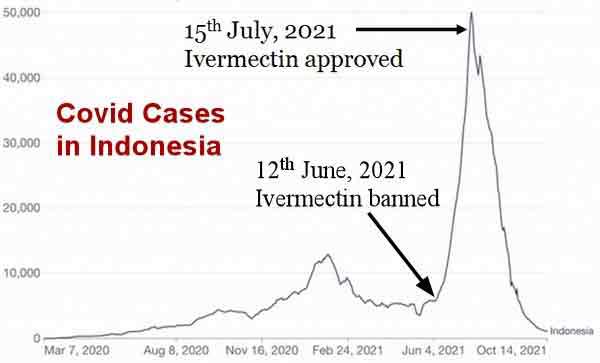
Countries around the world that used Ivermectin have shown dramatic reductions in COVID-19 cases.
Indonesia used Ivermectin effectively but after following Western medical recommendations and introducing a ban, COVID-19 cases increased dramatically.
After Ivermectin was again permitted the number of COVID-19 cases dropped dramatically, confirming its benefit.
The diagram below shows a sharp decline in the rising rate of cases in Japan, following the government reversing its decision to follow the World Health Organization and US regulatory agency guidelines forbidding doctors to prescribe ivermectin, and allowing its use for treating COVID-19 during the Tokyo Summer Olympics.
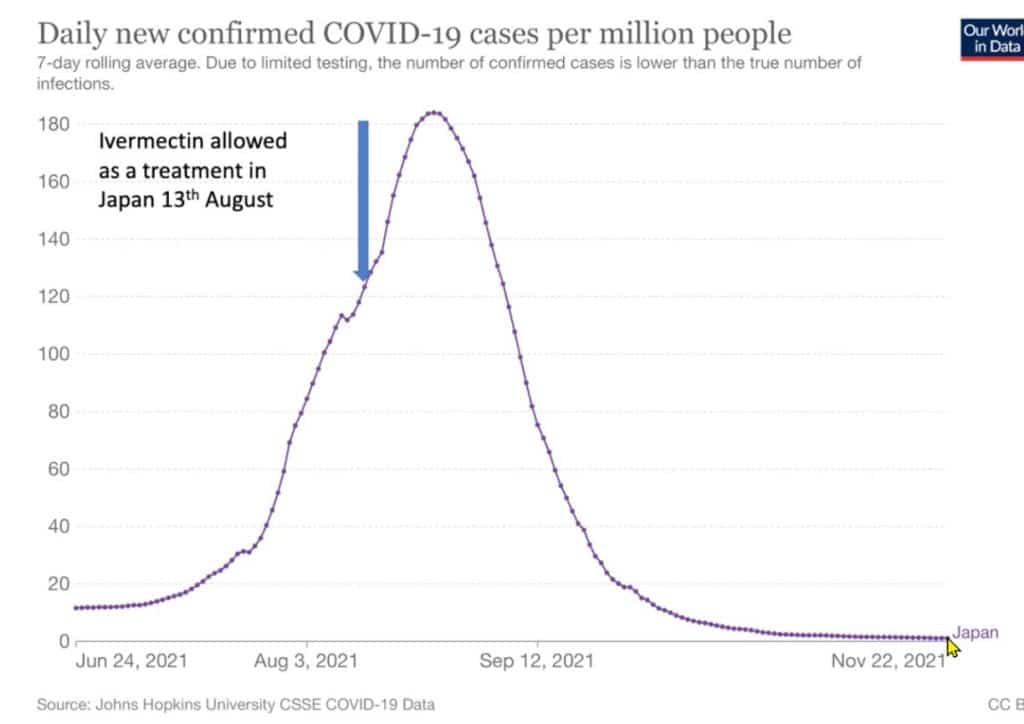
Special medical teams distributed the internationally banned medications to sick people at home, after prominent doctors spoke publicly on television supporting its use with no hospitalization when given as an early treatment and 100% survival rate.
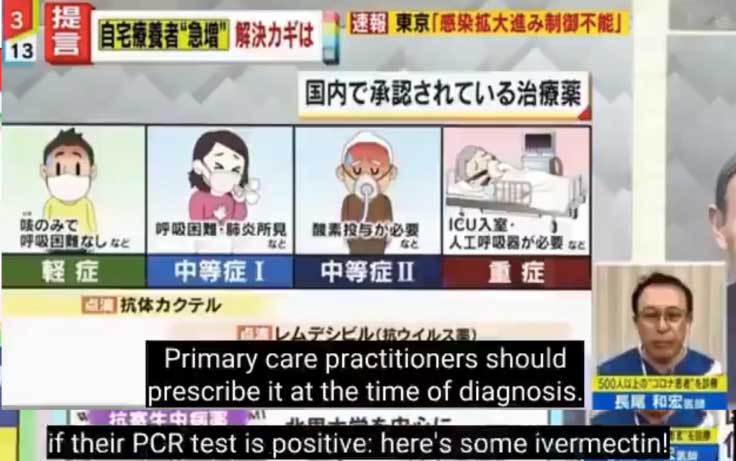

In the summer of 2021, after the Japanese television program featured above aired nationally and a message was sent directly to the Prime Minister to allow widespread use of ivermectin, COVID-19 cases fell from over 20,000 per day to under 20 per day in Tokyo, with a population of close to 30 million people in the surrounding region.
In many countries Ivermectin has been readily available without a prescription for decades, to keep in your medicine cabinet and as a weekly illness preventative.
It became famous for killing parasites that caused river blindness in Africa. Countries that made it available as an inexpensive treatment found it greatly helped to eliminate COVID-19 and reduce hospitalizations and deaths.
The medical chief in Tokyo promoted the use of ivermectin on television and amazingly his efforts were successful.
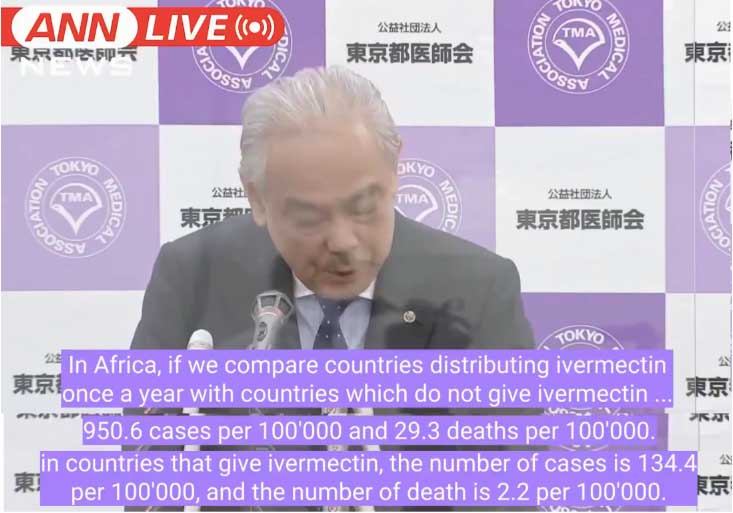
Japanese scientist Ohmura, Satoshi received the Nobel Prize in medicine for his discovery of ivermectin and it was listed on the WHO essential medicines list, prior to illogical COVID-19 restrictions on its use in developed countries.
Unfortunately, some countries prohibited access to these inexpensive treatments during covid in favour of waiting for patented drugs at much higher cost to the healthcare systems, many of which were not given proper safety testing.
The loss of life and cost to the healthcare systems, economic disruption and emotional harm of unproven, untested and never before implemented COVID-19 measures is impossible to calculate and difficult to contemplate.
Now we can compare the data between countries that took different approaches to COVID-19 and it turns out that some of the poorest countries without access to testing, masks, vaccines or modern pharmaceuticals had the lowest number of cases and fatalities per million people.
Conversely, the countries with the most testing, highest vaccination rates and access to the most expensive treatments like Remdesivir and ventilators had the highest number of cases and highest number of fatalities per million people.
Japanese politicians raised concerns in parliament, highlighting the fact that "all cause mortality" spiked following the introduction of vaccines.



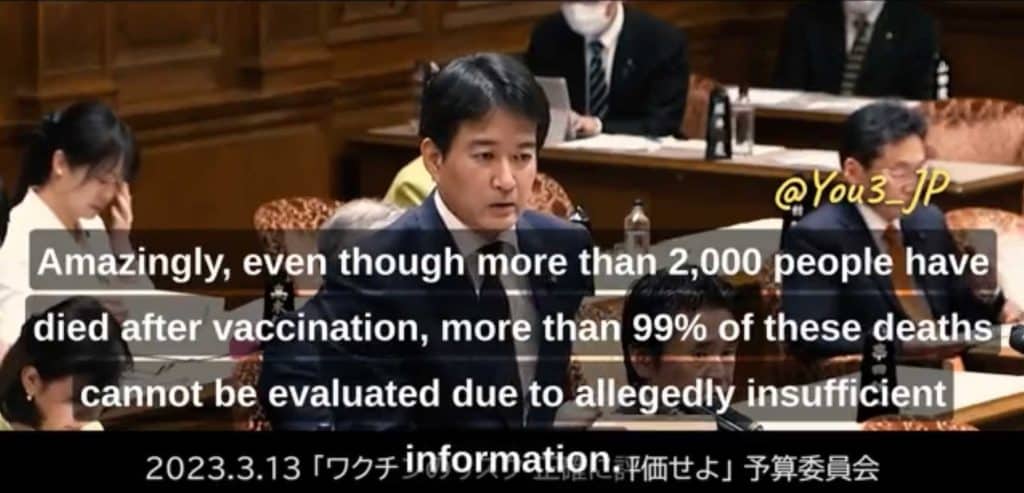
Autopsies were forbidden on COVID-19 patients in many countries to hide the connection to the harmful spike protein manufacturing process designed into the shots.
However, pathologists and undertakers have come forward after removing giant white fibrous clots that blocked normal blood flow and caused death.

This mystery has been unraveled by top scientists and medical researchers, but the answers are quite controversial as they expose the failures and errors of the modern medical system and regulatory agencies, which are unfortunately interwoven and profit oriented.
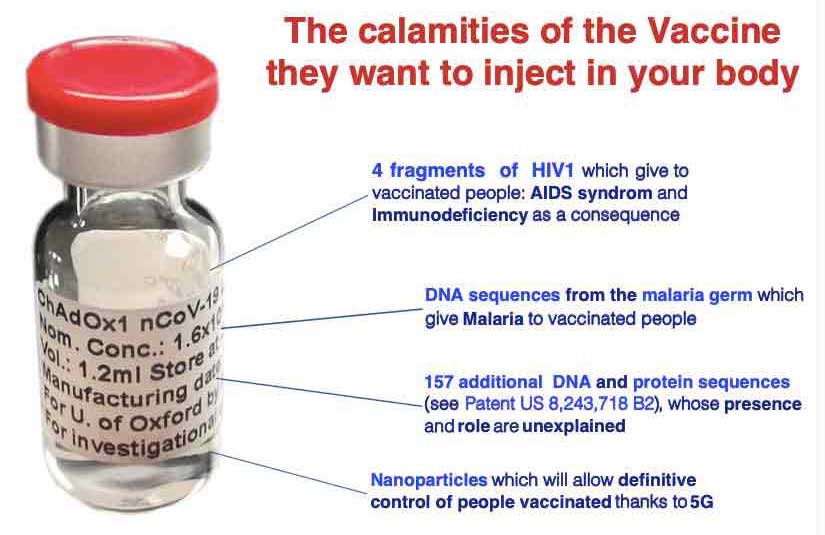
In the US, life insurance companies reported an unimaginable 13 standard deviation spike in "all cause mortality" deaths and disability for the 25 to 64-year-old workforce with full health insurance, signalling a catastrophic effect from the COVID-19 vaccine rollout.
VAIDS - Vaccine Induced Acquired Immune Deficiency Syndrome is already becoming a major medical problem worldwide with increasing rates of illness due to damaged natural immunity.
Prion disease "mad cow" over time results in dementia and will be accelerated with each booster shot.

An Italian doctor goes public with information from his insider sources.
Artificial Intelligence military developed hydrogel technology with graphene oxide, self-replicating circuitry secretly added to the vaccinations, is part of the COVID-19 digital ID registration program.
A=1 and I=9 in alphabetical order.

What on earth is this doctor going on about?
Well for example, in 2017 Deagel.com published a 2025 economic forecast for Italy with a 17 million population decline from 62 million to 44 million.
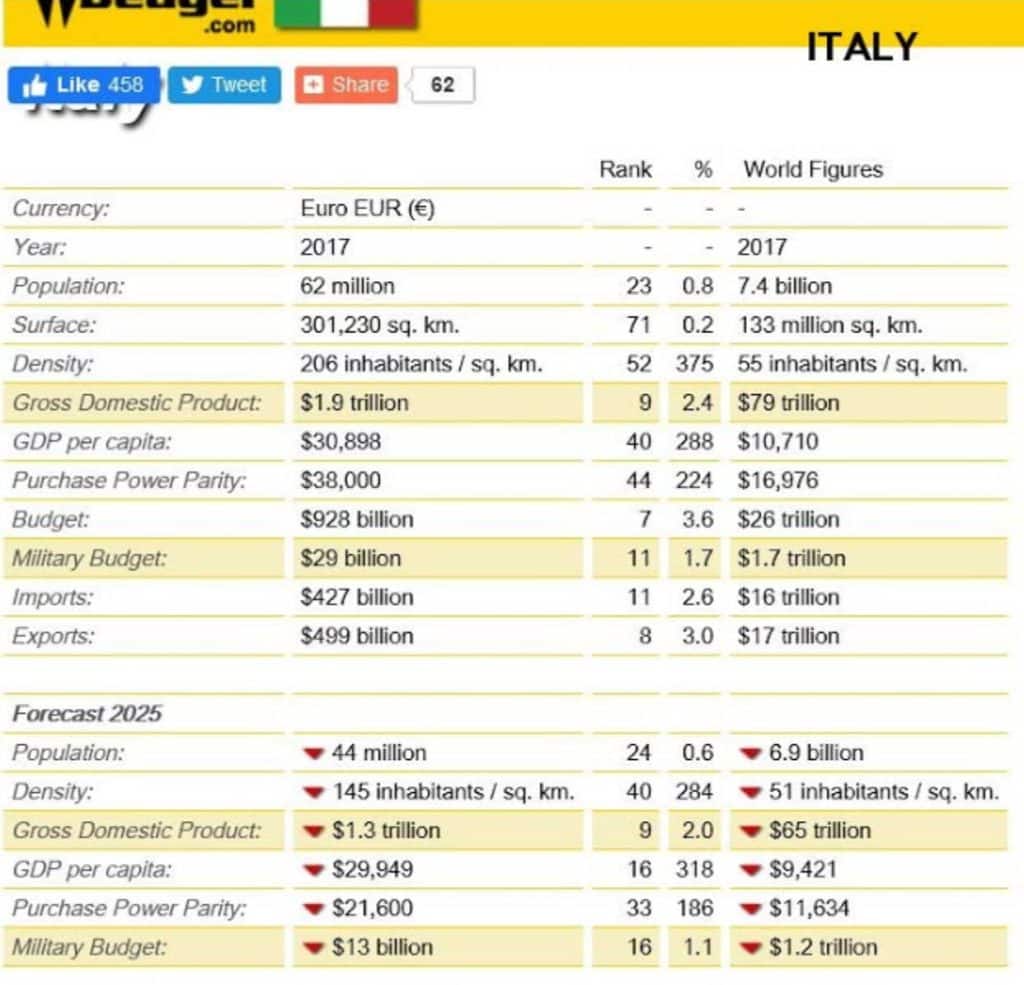
2017 also happens to be the year that COVID-19 tests were ordered by countries around the world.
No surprise when we see that the patent application for COVID-19 tests dates back to 2015!
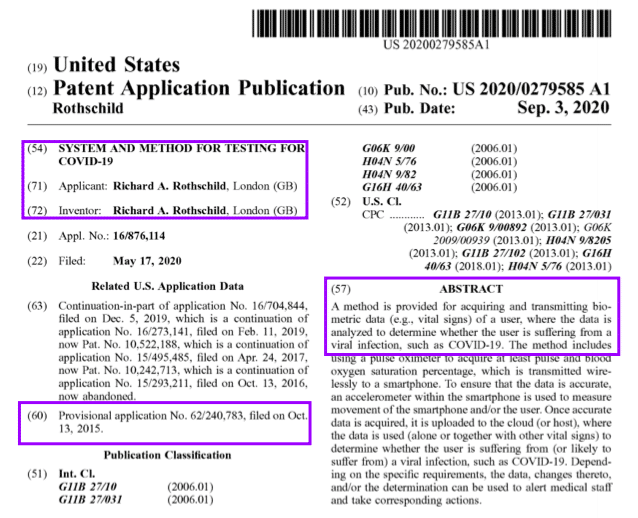
This shocking revelation reminds everyone who has taken the shots of the urgent need to detox the harmful spike proteins and nanotechnology using the information contained in this course.
A Google search reveals a 23-fold increase in queries for the term "DIED SUDDENLY from 2020 during the "pandemic" to 2022 with the first booster shots rolling out.
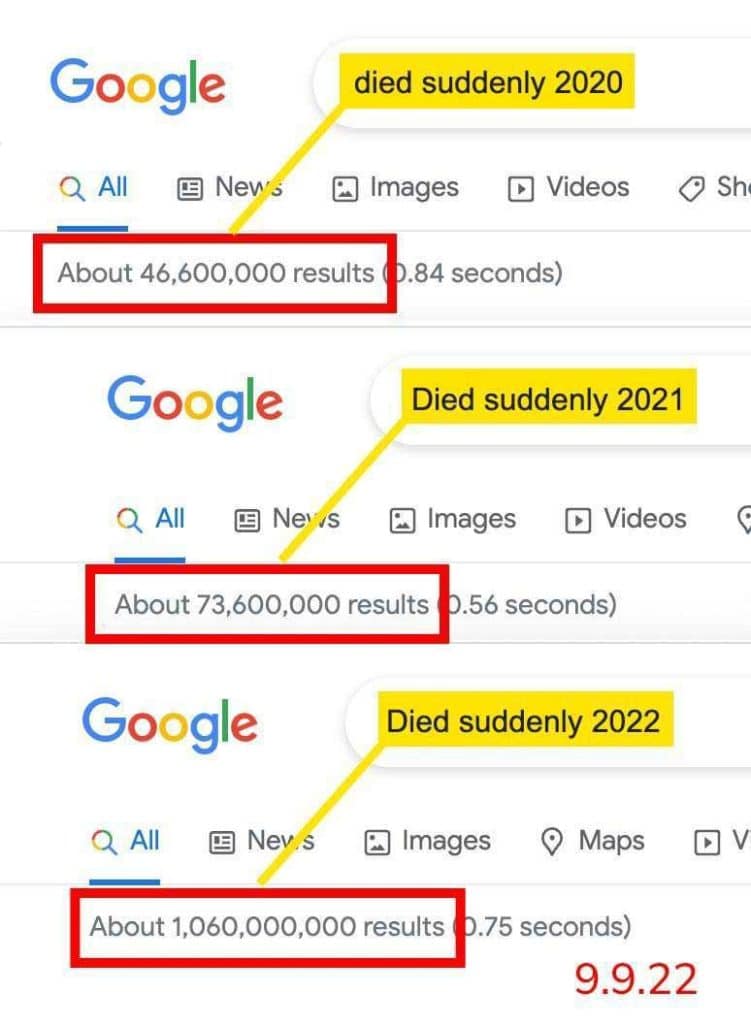
As with any medical treatments, there can be potential side effects and interactions with other medications.
Healthcare professionals should closely monitor patients receiving medical treatments to ensure their safety and well-being throughout the recovery process.
For many, recovering energy levels after an illness like COVID-19 is a gradual process. It often requires a combination of physical, nutritional, and mental health strategies.
Make a note of any new recommendations from this lesson that you are able to add to your daily or weekly routine. Update your Personality Progress Profile as you notice positive changes.
Remind yourself of your goals... say them out loud...
I'm going to regain my health! I'm going to be okay!
Now smile and hold the positive image in your mind.
When you achieve your mission accomplished goals we are going to celebrate!
